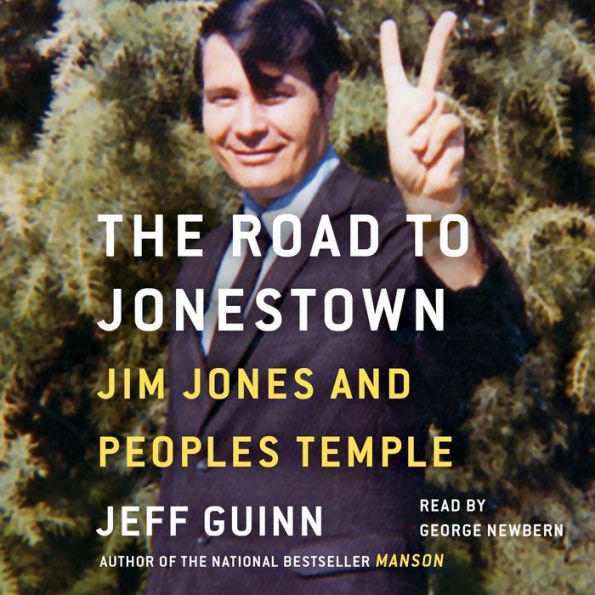Publishers Weekly
01/09/2017
One of the ghastliest outbreaks of fanaticism in recent times, the 1978 mass suicide of some 900 members of the Peoples Temple church, gets a magisterial treatment in this biography of leader Jim Jones. True-crime journalist Guinn (Manson) follows Jones’s rise as a charismatic, indefatigable minister in Indiana and California preaching Christianity, socialism, vehement antiracism, and a bizarre personality cult that worshipped him as God. There’s plenty of grotesquerie in the story, from Jones’s faith-healing with confederates and chicken guts to his sexual predations on followers, his attempts to relocate the church to the Soviet Union, the beatings he meted out, and the climactic poisoning of his flock with cyanide-laced Flavor Aid. But Guinn probes the deeper mystery of Jones’s hold over his abused disciples, part personal magnetism and part genuine idealism, showing his commitment to civil rights and social justice—he was one of few white leaders to help integrate Indianapolis, pioneered welfare-services programs, and became a force in San Francisco progressive politics—and the warm personal regard he projected to his many poor, black followers. Guinn’s exhaustive research, shrewd analysis, and engaging prose illuminate a monstrous yet tragic figure—and the motives of those who lost their souls to him. Agent: Jim Donovan, Jim Donovan Literary. (Apr.)
Jim Jones
I have to say that it is weird to find out the background of things that I grew up hearing about around the dinner table. The level of research and detail in The Road to Jonestown is the best ever, and really lets readers understand not only what happened, but how and why. This book tells the Jim Jones story better than anything I have read to date.
The Boston Globe - Dan Cryer
"A thoroughly readable, thoroughly chilling account of a brilliant con man and his all-too vulnerable prey. . . . Generates a bizarre — dare I say Manson-like? — magnetic force that pulls the reader through its many pages. Noir thriller morphs into horror story."
The San Francisco Chronicle - Kevin Canfield
Jeff Guinn offers what might be the most complete picture to date of this tragic saga, and of the man who engineered it. . . . The result is a disturbing portrait of evil — and a compassionate memorial to those taken in by Jones’ malign charisma.
BookPage
"A powerful account of Jones's life. . . . Guinn's blow-by-blow account of Jonestown's final days in the book's last chapters is riveting."
Seattle Times - Kevin J. Hamilton
Guinn is a master storyteller with a unique expertise in murderous psychotics. The book reads like a thriller, each page forcing your attention to the next as the Peoples Temple slowly slides from groundbreaking progressivism toward madness.
Fort Worth Star-Telegram - Jill Johnson
Guinn paints a fascinating and even-handed portrait of Jones.
Library Journal
02/15/2017
The Peoples Temple began benignly enough. Founder Jim Jones (1931–78) preached racial and economic justice, establishing the cult in 1955 as an Indianapolis-based spinoff of evangelical Christianity mixed with communism. In 1965, Jones moved his congregation to California, where he evaded scrutiny by allying with liberal politicians. Sued by concerned relatives of cult members and embarrassed by reports of staged miracles and fraud, Jones ultimately moved again, this time to Jonestown, a remote jungle commune in Guyana. Increasingly paranoid and delusional, he ordered his followers to drink cyanide-laced Flavor Aid in 1978. A total of 918 people died. Guinn (Manson) delivers an exhaustive account, drawn from interviews, diaries, and declassified files, of how this saga unfolded. Replicating the success of his biography of Charles Manson, the author also delivers a nuanced portrait of Jones's descent into paranoid megalomania. Although Jones warned of nuclear holocaust and exploited Americans' poverty and alienation, Guinn does not fully ground Jonestown in its social, political, or psychological contexts. The story ends but questions persist. VERDICT With this fascinating read, Quinn delivers the most thorough and in-depth history yet of the Peoples Temple. [See Prepub Alert, 10/17/16; "Editors' Picks," p. 28.]—Michael Rodriguez, Univ. of Connecticut
Kirkus Reviews
★ 2017-02-06
"Kool-Aid rather than equality is what the rest of the world remembers"—a searing account of what has since become a byword for religious cultism.That Jim Jones (1931-1978) was a nut case—no term of psychiatric art but still true—was plain for most to see way back before he became infamous for the events of Nov. 18-19, 1978, when he and more than 900 of his followers died in their dystopian colony in the jungles of Guyana. Even so, Bay Area politicians gladly accepted his campaign contributions, some lauding him for his good works of social justice and concern for the poor. Those works and concern were genuine. Guinn (Manson: The Life and Times of Charles Manson, 2013, etc.), who favors hard fact over psychobiographical speculation but indulges in a little of it all the same, notes that there was method to some of Jones' madness, at least its less lethal manifestations. For instance, his Peoples Temple sermons in San Francisco were wandering, fuguelike, endless affairs, but they "deliberately rambled" to afford Jones the chance to embrace atheists, junkies, Marxists, Black Panthers, and anyone else who showed an interest in his cause, even as he referred to himself on the pulpit as "God, the reincarnation of Christ, or Lenin in a single turn." Guinn does an excellent job of following Jones to the roots: a rural loner who became a genuine advocate for poor African-Americans, a searcher with a long interest in building a safe harbor for his followers (he even courted North Korea and the Soviet Union as possible homelands), and an all-around strange person with an endless appetite for drugs—"amphetamines and tranquilizers, pills and liquids to provide significant boosts of energy, or else slow down his racing imagination and allow him to rest"—and decidedly un-Christian patterns of behavior. A vivid, fascinating revisitation of a time and series of episodes fast receding into history even as their forgotten survivors still walk among us.



